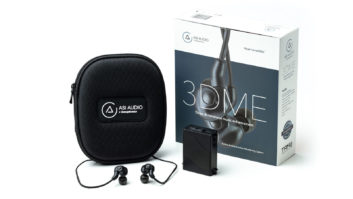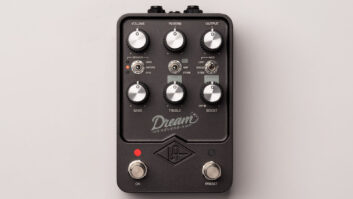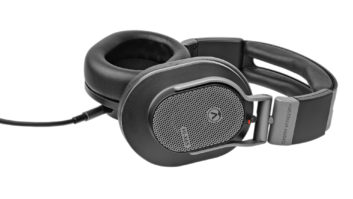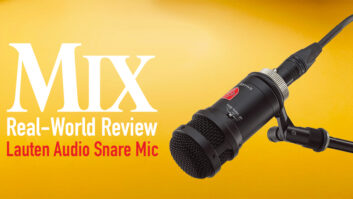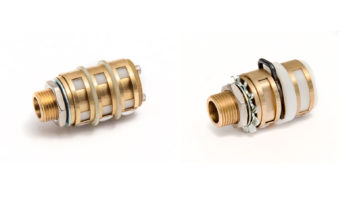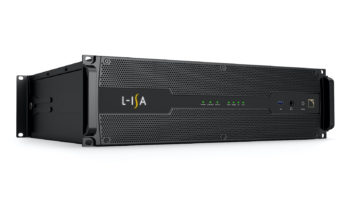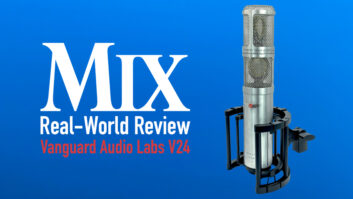
The Arsenal Audio EQ-R24 offers four bands of equalization modeled after the classic APSI model 562 EQ.
For a few years in the 1970s, API sales catalogs included equalizers designed and manufactured by APSI, a console manufacturer. APSI eventually folded, but the popularity of its Model 562 solid-state equalizer endured. API has resurrected the 562’s vintage design in the EQ-R24, a new dual-channel equalizer released under the brand name Arsenal Audio.
The EQ-R24’s control layout is straightforward and identical for both of its channels. Each channel has four overlapping bands of bell-curve equalization. Separate continuously variable rotary controls for center-frequency selection and boost/cut serve each band. The EQ bands include lows (20 to 200 Hz); low-mids (100 to 1k Hz); high-mids (500 to 5k Hz); and highs (2k to 20k Hz). Up to ±12dB boost/cut is available to each band. The Q for each band is fixed at roughly 0.6 to 0.85 (approximately two octaves), making the R-24 suitable for broad tonal shaping but not for surgical tweaks. None of the rotary controls are detented.
A bypass switch is provided for each channel but not for individual bands. A heavy-duty power switch and associated jewel lamp conveniently reside on the front panel. Large U-shaped handles are included on the unit’s face to aid in transporting the EQ-R24. I/O connections include balanced XLR and ¼-inch TRS jacks wired in parallel on the rear panel.
In the Studio
On an acoustic guitar miked with a spaced pair of Neumann KM184s, using the EQ-R24 to boost at 10 kHz and cut at 200 Hz yielded superb results. The high end was remarkably sweet sounding. High-frequency boost on acoustic piano yielded equally impressive results.
I got good results pumping up the low end on kick drum and bass tracks. But the omission of a low-frequency shelving filter thwarted my attempts to get a completely even response down to the very bottom of the spectrum. On pop-rock vocals, cutting heavily at 20 Hz was a good substitute for shelving cut at a higher frequency, cleaning up bottom-end mud. Boosting around 175 Hz and at 3.5 kHz produced a huge, round, sweet vocal sound.
On fiddle, a 6dB cut at 20 kHz reached down to lower frequencies to reduce scratchy highs and was the best proxy for a high-shelving cut at a lower corner frequency.
The EQ-R24’s specification for maximum level seems conservatively rated at +23 dBu, as my review unit had no trouble handling +26dBu input from my console’s mix bus. On full mixes, the EQ-R24’s high end once again sounded much sweeter than most other equalizers I’ve heard. That said, I missed having Q controls to zero-in on narrow frequency bands, a highpass filter to remove rumble, and high- and low-shelving filters for the most even treatment at each end of the spectrum. The omission of output gain controls also forced me to recalibrate downstream A/Ds to obtain optimal levels. But such a minimalist design is no doubt partly responsible for the EQ-R24’s pristine sound.
I found the EQ-R24 to be most adept at sculpting the tone of individual tracks, but good results can also be obtained processing full mixes. Having four overlapping bands of bell-curve filters per channel and swept frequency controls promise great flexibility. But the omission of shelving, lowpass and highpass filters and Q controls makes it harder to fine-tune the sound of tracks needing subtle adjustments. Despite these practical limitations, the EQ-R24 is a great tool for broad tonal-shaping purposes. You’ll be hard-pressed to find an equalizer with such a sweet-sounding high end at this price.
Mix contributing editor Michael Cooper is the owner of Michael Cooper Recording in Sisters, Ore. Visit him at
www.myspace.com/michaelcooperrecording.


